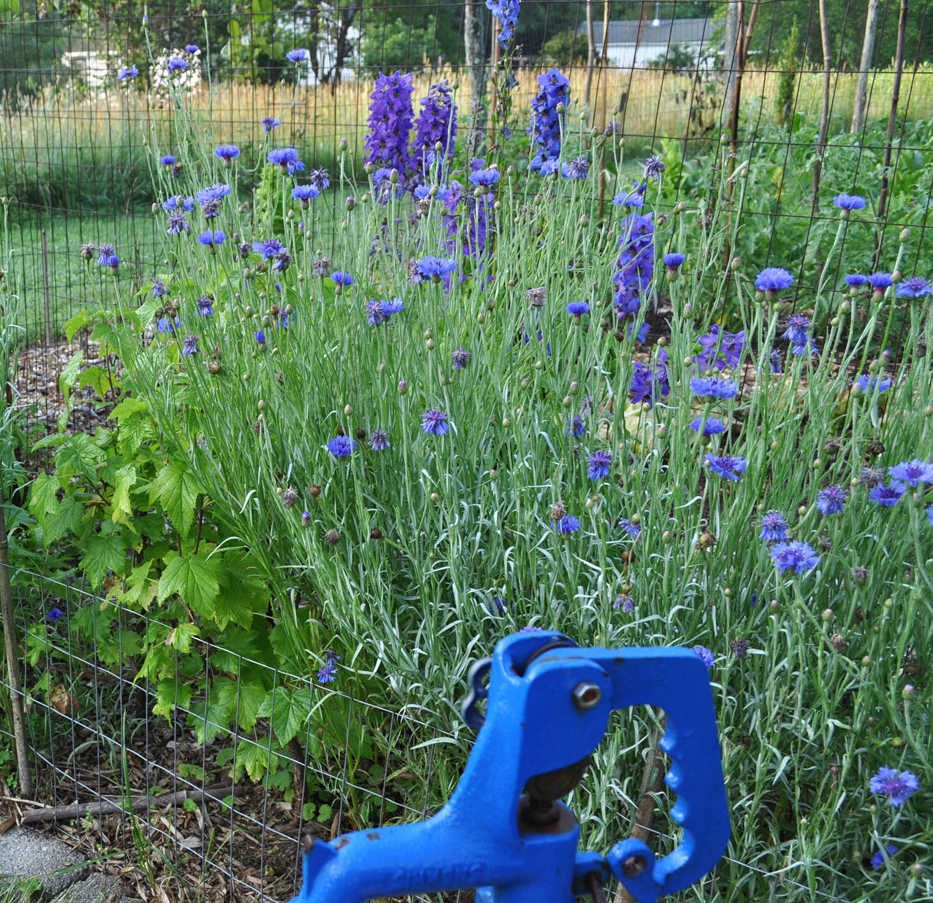My delphiniums are now in all their stately glory, the 5-foot, blue spires reaching for the sky as they guard the gate to my vegetable garden.
I have to admit that besides their beauty, I also enjoy growing delphiniums to show off. On the one hand, they are not hard to start from seed, and seedlings bloom quickly, often in their first season if started early enough. On the other hand, growing delphiniums to perfection is one barometer of a gardener’s skill.
Years ago, when I first grew delphiniums from seed, I went through all the machinations suggested in gardening books for ensuring good germination. Fresh seed was said to be a must.
The seed was also said to have a cold requirement before it would sprout, and the suggestion usually offered was to make ice cubes with the seeds in them, then leave the cubes in the freezer for a few weeks. This directive always struck me as odd because it is refrigerator temperatures, not freezer temperatures, that generally snap seeds out of dormancy. Still, I followed the directions and wound up with a bevy of delphinium seedlings that grew into a forest of blue spires.
Delphiniums thrive only in soil that is very fertile, very moist and very well-drained. You can’t just sprinkle some 10-10-10 on the ground and expect bragging rights for your delphiniums. The best way to get that very rich, moist and well-drained soil is to use compost, and plenty of it. My best delphiniums grew where one of my compost bins had been for the previous seven years.
Compost does only so much as far as retaining moisture, though. In a dry summer, delphiniums in any soil need regular watering. Unlike perennials such as coneflower, liatrus and coreopsis, which thrive in lean, dry soils, delphiniums need coddling. My delphiniums drink water from the drip irrigation line in the vegetable garden on the other side of the fence.
Even with coddling, delphiniums are usually short-lived for perennials. No matter how well you treat them, they lose steam after a few years. How long depends on how well you treat them, which you can control, and on the weather, which you can’t control.
Hot summer nights favor their demise, and wet winters sometimes cause them to rot. That’s why delphiniums thrive in British gardens and, in America, in northern regions and along the Northwest and Northeast coasts.
Don’t try to keep delphiniums cool by putting their heads in too much shade; they tolerate some shade but generally like full sun best.
If you really love delphiniums, have some replacement plants ready for when older ones expire. Older plants can be — should be, eventually — divided, or new ones can be started from seed.
These days, I’m not nearly so fastidious about sowing delphinium seeds as I once was. I just shake out seeds from a reasonably fresh packet and sow them without any special treatment. Occasionally my delphiniums self-sow. I keep my eyes out for these tiny “volunteers” and then transplant them to where I want tall, blue spires.
No need to pine away for the blue spires once this bloom season passes: If the stalks with spent blossoms are cut back to the bottom whorl of leaves, new flower stalks will spring forth that should bloom again later this season.

